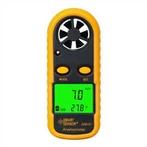Methods to Distinguish Between Alternating Current and Direct Current with a Multimeter
How can we quickly distinguish whether a power source is direct current (DC) or alternating current (AC) using a multimeter? Generally, people can make a rough judgment based on intuition. For example, batteries usually supply direct current, and the electricity from household sockets is generally alternating current. However, if there is a power source plugged into a socket at home and its label has fallen off, then we need to consider how to distinguish whether this power source is an AC power source or a DC power source.
It is very easy to distinguish with an electric test pen. But it doesn't make much sense to directly mention using an electric test pen in this article. Instead, let's share a more technical method of using a multimeter to distinguish between AC and DC power sources.
For alternating current, there is no distinction between positive and negative poles. When using the AC range of the multimeter to measure, the result is the same whether measured in the forward or reverse direction. However, when using the DC voltage range of the multimeter to measure direct current, it is not the case. There will be a difference of a " - " sign between measuring in the forward and reverse directions. From this aspect, we can also distinguish between AC and DC. But there is still a problem. In fact, to obtain this measurement result with a multimeter, we still need to know whether the power source is DC or AC in advance, otherwise, if the wrong range is selected, no result will be displayed.
So, we need to come up with another method. Suppose the power source to be distinguished is alternating current. Select an AC range with a relatively large measurement range on the multimeter. Bend the black test lead, approximately three turns or so, and leave the black test lead hanging in the air. It is best not to touch the tip of the black test lead with your hand. For the AC voltage range, touching the black test lead is not dangerous. But if the AC range is wrongly selected and you accidentally touch the black test lead while the red test lead is plugged into the socket, it will be very dangerous at this time. Therefore, for safety reasons, it is better not to touch the test leads with your hands.
The next step is to insert the black test lead into any jack of the power source. If it is alternating current, you will find that when inserting the black test lead into one of the two electrodes of the power source, a number will be displayed. If this situation occurs, it indicates that the power source is alternating current; otherwise, the power source is direct current.





